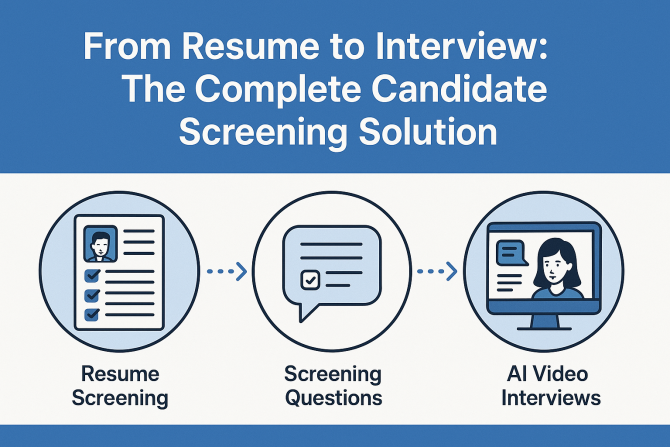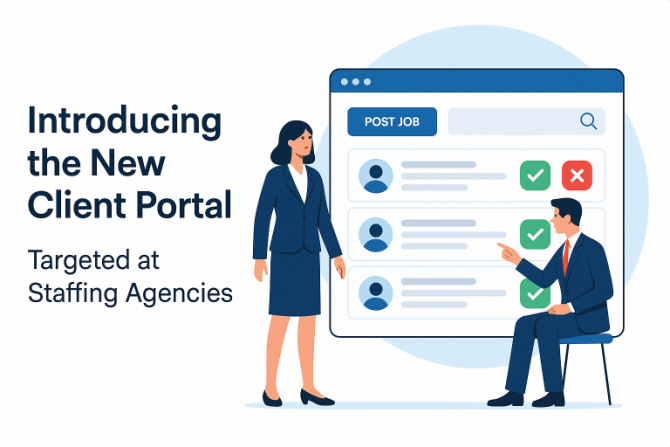
All You Need to Know About Passive Candidates
The success of a recruitment process highly depends on whether the strategy is aligned to the exact candidate. In this article, we will elaborate on how to deal with passive candidates by discussing who they are and how they differ from active ones.
Who Is a Passive candidate?
A passive candidate is a person who isn’t seeking a new occupation at the moment yet has the necessary skills and expertise for a particular position. Usually, recruiters source these potential employees if a job position requires extensive and uncommon experience.
The ultimate factor that contributes to a passive candidate’s attractiveness in the eyes of an HR manager is their skills and work experience. However, since the person is typically content with their current occupation, it’s challenging to reach, engage, and hire him/her.
With this in mind, we can describe the passive candidate as follows:
- Not searching for a new employer
- Has outstanding experience and skills
- Usually well-compensated at their current occupation
- Requires plenty of recruitment efforts
How Are Active Candidates Different From Passive Ones?
Unlike passive candidates, active participants of the labor market are searching for an occupation. It means they are dissatisfied with their current or previous employer and are searching for a better option. They may be on the hunt for:
- Promotional opportunities
- Personal, professional growth
- Higher pay
- More favorable corporate culture
The two types of candidates have completely different behavioral patterns. While passive candidates aren’t surfing around the web looking for new job offerings, active candidates do. They are completing the application forms and often reach employers on their own.
How to Recruit Passive Candidates
Passive recruitment is the process of reaching and hiring those participants of the labor market that aren’t actively looking for a new occupation but have all the necessary skills for your open position.
It means that spreading the word around the network about a new vacancy isn’t enough. The process is much more complex and usually involves the following steps:
1. Identifying Your Employer Brand
Since a passive candidate is usually well-benefited at the current workplace, you need to think about what you can offer and how this offer stands out from the array of others. Don’t limit the perks to financial benefits only. Today, people value a bigger goal and development opportunities as well.
One approach is to strengthen your corporate culture. According to data from Glassdoor reviews, more than 90 percent of all employees highlight the significance of strong employer culture. To spot out the strengths and weaknesses, consider asking your employees. For example, you can conduct a survey.
2. Determining a Set of the Necessary for a Position Skills
Hunting passive candidates requires much more resources. That’s why it’s highly important to correctly identify the necessary skills to reach the right person and reduce the risk of increased HR costs.
To determine the set of the necessary skills, you should start with developing a job profile and highlighting key expertise and skills. After this, you can make up a profile of an ideal candidate. Don’t forget to take into account your company’s mission, vision, and values.
3. Candidate Sourcing
To find the passive candidates, you need to identify their online and offline locations. Potentially, you can target:
- Professional events or organizations: Suppose you need a digital analyst; you can consider exploring the Digital Analytics Association. Visiting professional fairs and events is also a good idea to make a lot of meaningful connections.
- Social media: Predominantly, people use Facebook and LinkedIn to identify top performers. The latter, for example, offers access to more than 167 million professional profiles in the USA.
- Blogs: Posting interesting professional-related content on a blog gives you the chance to attract and engage your audience, including highly skilled specialists. Later on, you can try to recruit them.
4. Engaging the Prospects
Engaging a passive candidate involves a complex, personalized communicational strategy. Since they aren’t eager to change their job, you need to:
- Evoke interest in your company and position from the beginning: Send them content-rich documents about the business and position, include as much essential data as possible, and don’t forget about your company’s awards and achievements.
- Maintain personalized communication: Don’t pressure the prospect to make an immediate decision; instead, try building rapport. Don’t go for aggressive communication and avoid contacting them via corporate profiles.
- Give them time: Passive candidates need more time to consider the offer and prepare all the necessary documents to apply for a position. Don’t rush them.
If you need to create a compelling online presentation to grab the attention of passive candidates, Talenteria can help you out with branded application forms and mobile-friendly corporate landings. Please, contact us to learn more about your HR capabilities with Talenteria.





